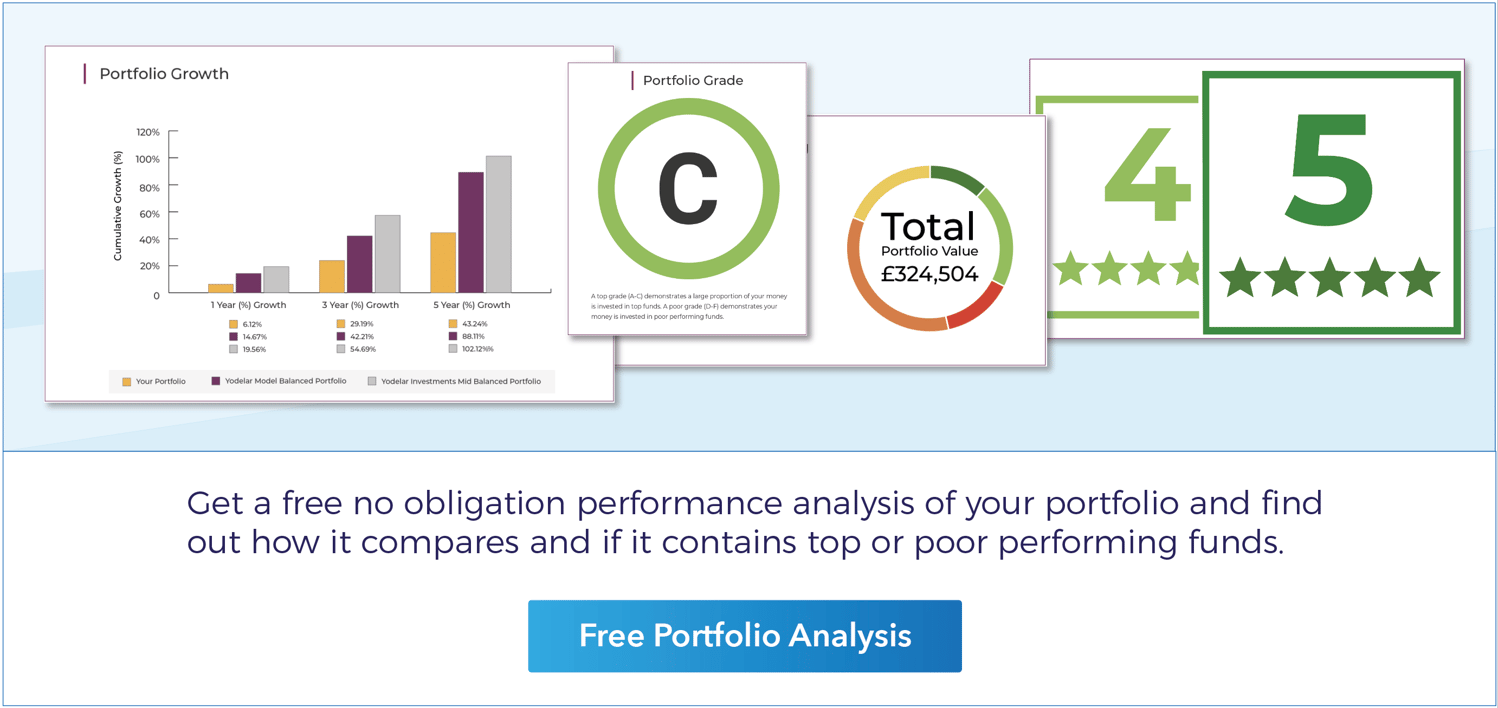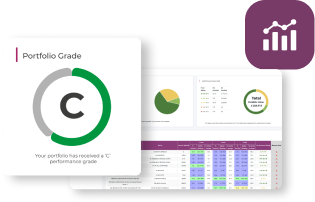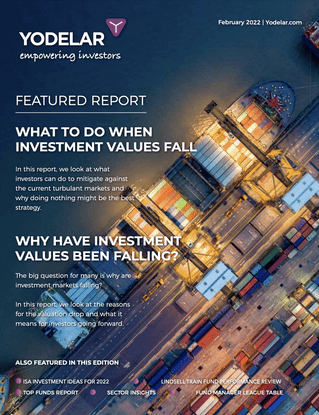- Our analysis of 3,961 Investment Association sector classified funds found that 64% underperformed their sector average over the past five years.
- Many portfolios meet compliance standards but fail to deliver efficient returns due to a lack of ongoing fund performance assessment.
- A detailed portfolio review can help identify weaker holdings and support stronger long-term outcomes - without increasing risk.
A portfolio may be well diversified and aligned to an investor’s risk profile - but that doesn’t guarantee it is performing efficiently. One of the most common issues we identify in portfolio reviews is the inclusion of funds that have consistently underperformed their sector peers. These funds can quietly limit growth over time, even when the overall portfolio appears suitable on the surface.
Suitability and compliance remain core requirements in financial advice. However, there is no obligation to analyse fund performance relative to sector averages or to review weaker performers on a regular basis. As a result, many portfolios meet regulatory standards but still fall short of delivering stronger long-term outcomes.
This article explores the impact of poor fund selection, the measurable cost of holding underperforming investments, and why regular portfolio analysis can play a key role in identifying inefficiencies that may otherwise go unnoticed.
64% of Funds Consistently Underperform
Fund performance naturally fluctuates, and all funds will experience periods of underperformance - particularly during times of market stress. However, the most consistently successful funds are those that have demonstrated an ability to navigate different market conditions effectively and deliver above sector average returns over time.
Our analysis of 3,961 Investment Association sector classified funds found that 64% underperformed their sector average over the past five years.
(Source @Yodelar.com. Based on proportion of 1 & 2 star rated funds using Yodelar rating criteria. Performance figures from @Trustnet).
How Yodelar Rates Fund Performance
Many of these funds are widely held across advised portfolios and commonly feature on recommended lists provided by leading investment platforms. In several cases, the funds with the largest investor inflows consistently ranked among the worst in their sector.
These trends often stem from a reliance on fund reputation, past popularity, or firm-level preferences, rather than consistent, comparative performance data. As a result, many investors remain in portfolios that include funds which have failed to deliver competitive returns over multiple periods.
While all funds will have weaker phases, those with a strong long-term track record have typically performed better across different market cycles. They demonstrate resilience and consistency, which can provide greater confidence in their ongoing role. Although past performance is not a guarantee of future results, it remains a valuable indicator of fund quality when viewed in context.
Even portfolios with the same risk profile can produce very different outcomes depending on the underlying fund choices. Without regular analysis, these performance gaps often go undetected, quietly reducing long-term growth and portfolio efficiency.
Quantifying the Cost of Poor Fund Selection
The difference in fund quality may seem small over a short period, but it can have a significant impact on long-term performance.
To show how fund selection affects long-term returns, we analysed the 10-year performance of funds across five major investment sectors: UK All Companies, Global, Europe ex UK, North America, and Mixed Investment 40-85% Shares.
In each sector, we compared how £10,000 would have grown if invested in top, poor or average performing funds.
For each sector, we calculated the average 10-year return for:
- Top Performing funds (Rating 4 or 5 Star)
- Poor Performing Funds (Rating 1 or 2 Star)
- The overall sector average

How Yodelar Rates Fund Performance
Over a 10-year period, a £10,000 investment in higher-rated funds grew to between £17,588 and £36,565, depending on the sector. In comparison, the lowest-rated funds returned as little as £14,952 - with the largest gap seen in the North America sector, where the shortfall reached £9,840.
The Long-Term Impact of Holding Poor Funds
Small gaps in performance compound over time. A fund that delivers just 1.5% less per year than stronger alternatives may seem acceptable - but over 10 years, that gap can result in more than £40,000 in missed returns on a £250,000 portfolio. Over 20 years, the shortfall could exceed £130,000.
Two portfolios with the same risk level and asset mix can deliver very different outcomes depending on fund quality. In our reviews, we frequently see 20% to 30% performance gaps over a decade between portfolios built with top-quartile funds and those holding below-average performers.
In rising markets, these issues often go unnoticed, as all funds show growth. But when reviewed against sector averages, the shortfall becomes clear.
Identifying which funds are consistently underperforming - and understanding how they affect overall returns - is a vital step toward improving portfolio efficiency.
Why Many Portfolios Contain Poor Performing Funds
Investors and advisers don’t intentionally select poor-performing funds. Yet across the portfolios we assess, it’s common to find holdings that have delivered persistently weak returns relative to their sector. There are typically 3 main reasons for this.
Standardised Portfolio Models
Many advice firms use structured portfolio models - often part of a Centralised Investment Proposition (CIP) - to ensure consistency and suitability. While these models help meet regulatory standards, the underlying fund selection is not always reviewed in detail against sector peers. As a result, some underperforming funds can remain in place for years.
Recommended Fund Lists
Platform-recommended fund lists are intended to support investor decisions. However, these lists are not always built on performance data. Some funds included have consistently ranked in the bottom half of their sector.
Self-Directed Investing
Investors who choose their own funds often rely on brand familiarity or historic reputation. Without tools to assess comparative performance, it can be difficult to identify whether a fund remains competitive.
How Better Oversight Can Improve Performance
Many high-quality advice firms enhance their investment governance through regular fund oversight, performance analysis, and structured reviews. While all investments carry risk, a more data-led approach to fund monitoring can help identify inefficiencies and ensure portfolios remain aligned with investor goals.
Regular portfolio reviews - looking not only at suitability but also at fund structure, performance, and asset mix - can provide greater confidence that investments are working as effectively as they should.
To ensure your portfolio is constructed with a focus on fund quality it’s essential to ask your adviser the right questions.
3 questions to ask your investment adviser
-
Do you give independent or restricted financial advice?
-
Do you recommend your own company’s investment funds and if so how I can be convinced they are the most suitable products for me?
-
What processes do you have in place to ensure my money is invested efficiently in high quality investments?
An adviser who can answer these questions clearly and confidently is more likely to have a structured, evidence-based process in place - one that goes beyond the basics and prioritises long-term results.
How to Identify Underperformance
Many investors assume their portfolio is performing well because it has grown. But without assessing each fund against its sector, it’s hard to know whether that growth is competitive.
A detailed portfolio analysis can highlight areas of underperformance that might otherwise be missed.
What a Yodelar Portfolio Analysis Identifies:
- Fund Performance Rankings: 1, 3 and 5-year rankings for every fund compared to its sector.
- Yodelar Fund Ratings: Each fund rated 1 to 5 stars based on sector-relative consistency.
- Portfolio Quality Breakdown: The percentage of your portfolio in 1 to 5-star rated funds.
- Risk-Matched Comparison: How your portfolio has performed against a similar-risk model built with top-performing funds.
- Overall Portfolio Grade: A summary rating (A to F) based on performance and sector rankings.
This type of analysis gives investors a clearer view of how their portfolio is performing and whether there are areas for improvement.
Why Regular Review Matters
Portfolios change over time. Funds that were once competitive may fall behind. Without regular reviews, underperformance can persist unnoticed.
Advisers are required to ensure portfolios remain suitable. But suitability doesn’t guarantee efficiency. A portfolio can be compliant and diversified, yet still contain funds that hold back growth.
A structured, evidence-based review - focused on how each fund contributes to overall performance - is essential to maintaining both suitability and efficiency.
Don’t Let Underperformance Go Unnoticed
The cost of weak fund selection is rarely obvious at first. A portfolio may show growth, but unless each fund is assessed against its sector, it’s difficult to tell whether that growth is competitive.
Improving efficiency doesn’t always mean taking on more risk. Often, it comes from greater insight and informed decisions.
For investors looking to strengthen their portfolio, a performance-led review is a practical first step. It helps uncover inefficiencies and ensures your investments remain aligned with your long-term goals.
This article is for information purposes only and does not constitute financial advice. Yodelar does not provide investment recommendations without a full assessment of an individual’s objectives and circumstances. All investments carry risk, and past performance is not a guide to future returns.

















